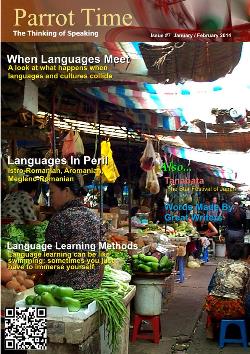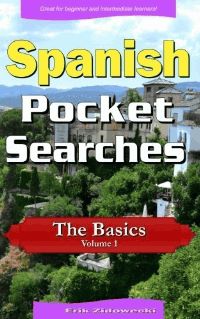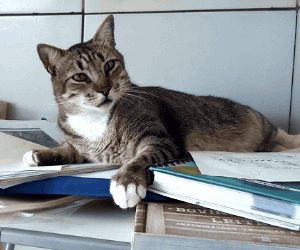
|
Living Together Just as some people can learn to live together peacefully (mostly), languages can also find a way to coexist. One country in which this can be easily shown is Belgium, which is a convergence point of both Latin and Germanic cultures. Over the centuries, it was dominated by different nations, including the Spanish, Austrians, French and Dutch. Today, it is mainly divided along its Latin and Germanic heritage. The Latin-evolved language of French has prominence in the region known as "Wallonia", and the dialect of French spoken there is called "Walloon". The Germanic-based language Dutch has its place in the northern areas, and its dialect is called "Flemish". 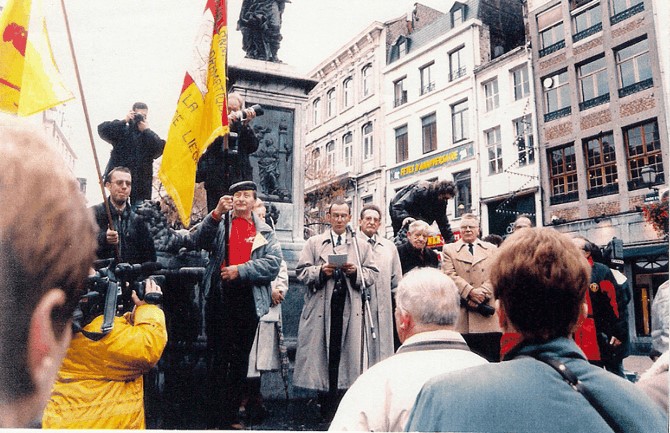 Meeting for more Walloon language on Walloon public TV at Liège These "linguistic lines" are very obvious throughout most of the country. In some areas, you can literally cross the street and go from a Flemish to a Walloon neighborhood. Everything changes between those: the spoken language, signs, billboards, etc. Even while driving along the highways, you can see the names of the locations on the signs changing, depending which section you are in. Each region has its own administration and government. Public libraries, firehouses, unions, even churches are all duplicated between the Flemish and Walloon languages. The countries capital, Brussels, is in the Flemish northern half, and is supposed to remain bi-lingual, but is predominately French. Dual-language signs do exist, but they are often the targets of graffiti, which is used to deface one of the two languages. The conflict between the two sides has been expanding over recent events, including the introduction of French-speaking cable TV and a festival of French films, the latter of which was cancelled due to a demonstration of a Flemish group in the school where the festival was to be held. Both sides, Flemish and Walloon, want to become the dominant one in controlling the country. Compromises have continued to keep the balance in check without leading to violence, but how long that remains is unknown. 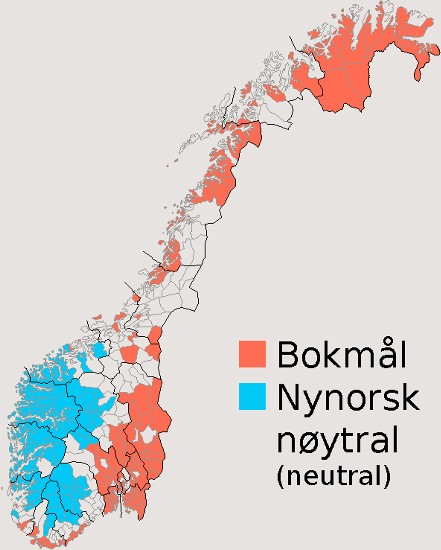 Map showing the distribution of Bokmål and Nynorsk in Norway. Neither of these languages, surprisingly, are official languages of Belgium. Those are French, Dutch and English. There are also more languages spoken there. Besides dialects of Flemish, there is Brabantian, Limburgish, Picard, Champenois, Lorrain, Low Dietsch. None of those are involved in such an intense cold war as Walloon and Flemish, though. In recent years, there has been increased talk of the dissolution of the Belgium, separating the Dutch-speaking people of the Flanders region and Brussels from the French-speaking people of the Walloon region and Brussels. They could become independent or become part of their parent countries of the Netherlands and France. A stranger case can be experienced in Norway. There, the spoken language is agreed upon, what we call "Norwegian". The conflict here is actually between the two written forms of the language, Bokmål and Nynorsk. Norway has both Bokmål and Nynorsk as official languages, with both being used by the government, schools, and the media. There isn't just a matter of using different alphabets, as in the Latin Bosnian and the Cyrillic Serbian, or even spelling, as in the different forms of Papiamento. These are two entirely different different written languages. Sometimes, the changes are minimal. "This is a horse" would be written as "Dette er en hest" in Bokmål and "Dette er ein hest" Nynorsk. "I come from Norway" shows a larger difference, with "Jeg kommer fra Norge" (Bokmål) and "Eg kjem frå Noreg" (Nynorsk). There are also a few rare times when a merger, resulting in a creole, may actually become a more dominant form that replaces a parent language, helping to drive it to extinction. Although educated in both Bokmål and Nynorsk, most Norwegians use Bokmål as their daily written language, while a much smaller number use Nynorsk as theirs, even though most of the spoken dialects resemble Nynorsk more closely than Bokmål. Neither written language has a true claim to being authentic, and it doesn't appear that Norway will be torn apart over this. In a few instances, a language exists in its own region within a few different countries. Such is the case of Basque and Catalan. The Basque people live mainly in what is called Basque Country which can be found at the western end of the Pyrenees, and it is in both north-central Spain and south-western France. In Spain, it is has a co-official language status in the Basque regions there, but in France, it has no official status. Catalan is a Romance language mainly spoken in what is known as Catalonia, which also straddles Spain in the northeastern part and part of France. It is recognized as the the national and only official language of Andorra, a co-official language of the in the Spanish parts of Catalonia. It, too, has no official recognition in France. Most Catalan speakers in Spain are bilingual in both Catalan and Spanish. Outcomes Languages themselves don't actually conflict with each other, of course. It is the people that use them that truly control the situations. Nevertheless, they are bound together, so as long as people fight, their effect on their languages will be part of the outcomes. As we've noted, there are both good and bad aspects to the conflicts, with some languages becoming extinct while others are born. Languages, like empires, also rise and fall. It's a natural cycle of history, and we will always mourn the deaths of those that fall while celebrating the birth of new tongues. PT |
| Special Feature - When Languages Meet | ||||||||||
| Writer: | Erik Zidowecki | |||||||||
| Images: | ||||||||||
| ||||||||||
All images are Copyright - CC BY-SA (Creative Commons Share Alike) by their respective owners, except for Petey, which is Public Domain (PD) or unless otherwise noted.
comments powered by Disqus









